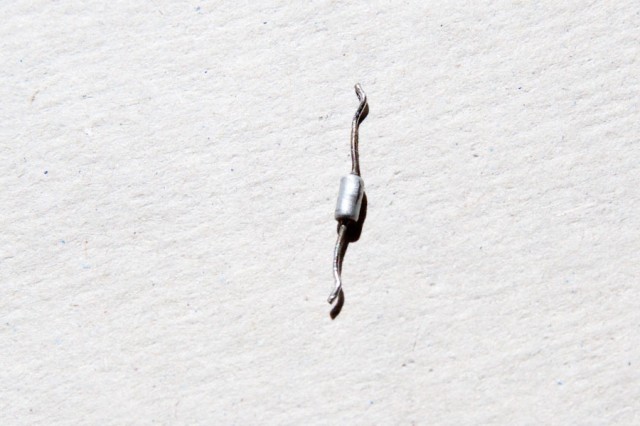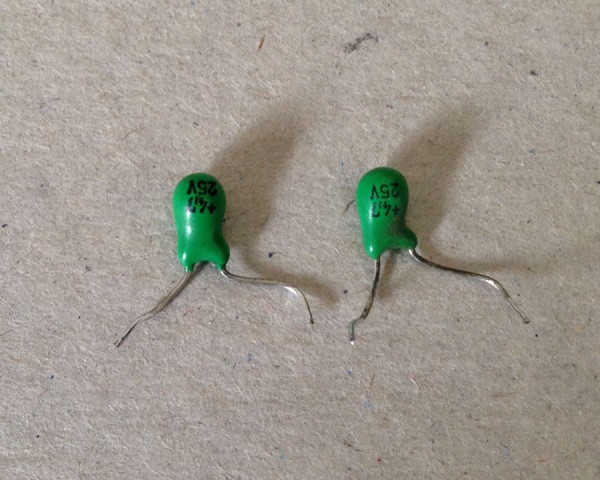Tip: When adjusting the 5 volt supply on a Gottlieb Systems 80B pinball machine, adjust it to 5.00 volts or lower, but not below 4.85 volts.
The reason for this is the poor design of the Memory Protect circuit, located on the CPU board. There is a 3V zener diode (VR1) located on the CPU board that will start getting hot and fail if the supply voltage goes above 5.0 volts.
Although the failed zener diode shown above was still basically working, I suspect it was acting intermittently, causing the CPU board to freeze up. Regardless, a bulging and cracked diode shouldn’t be trusted. This was from a machine where the 5 volt supply was adjusted over 5.00 volts (5.12 volts).
Also, the 5 volt adjustment pot on the power supply should be replaced with a fixed resistor. The pot will get dirty and become sensitive to vibration, causing voltage fluctuations. The best thing to do is adjust it for 5 volts, de-solder the pot from the circuit board, measure the resistance, and replace it with a fixed resistor or a combination of fixed resistors to obtain an equivalent resistance.


